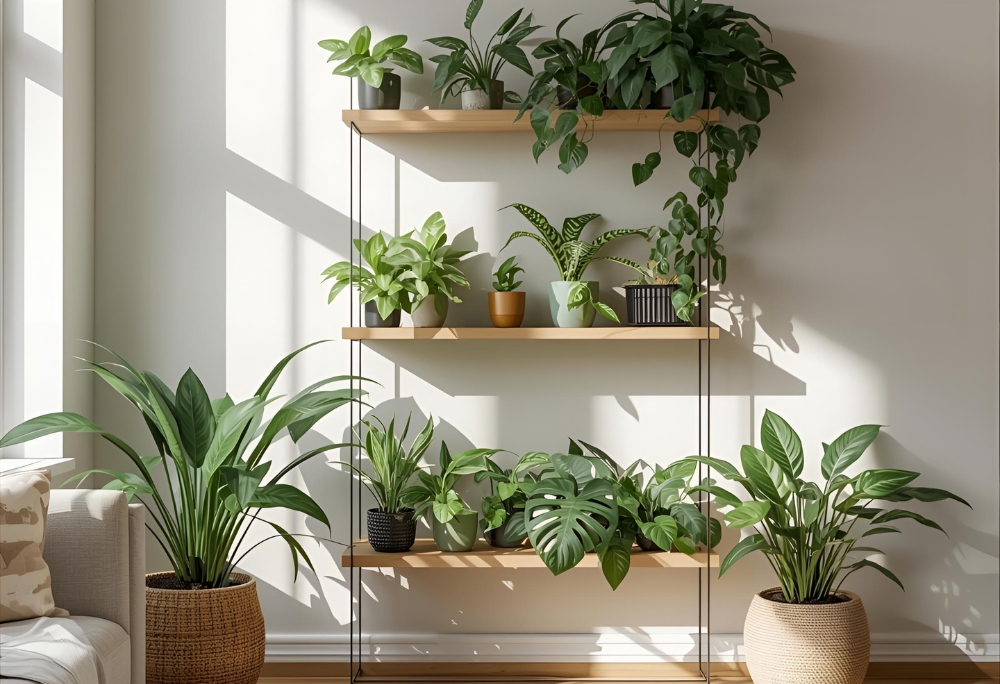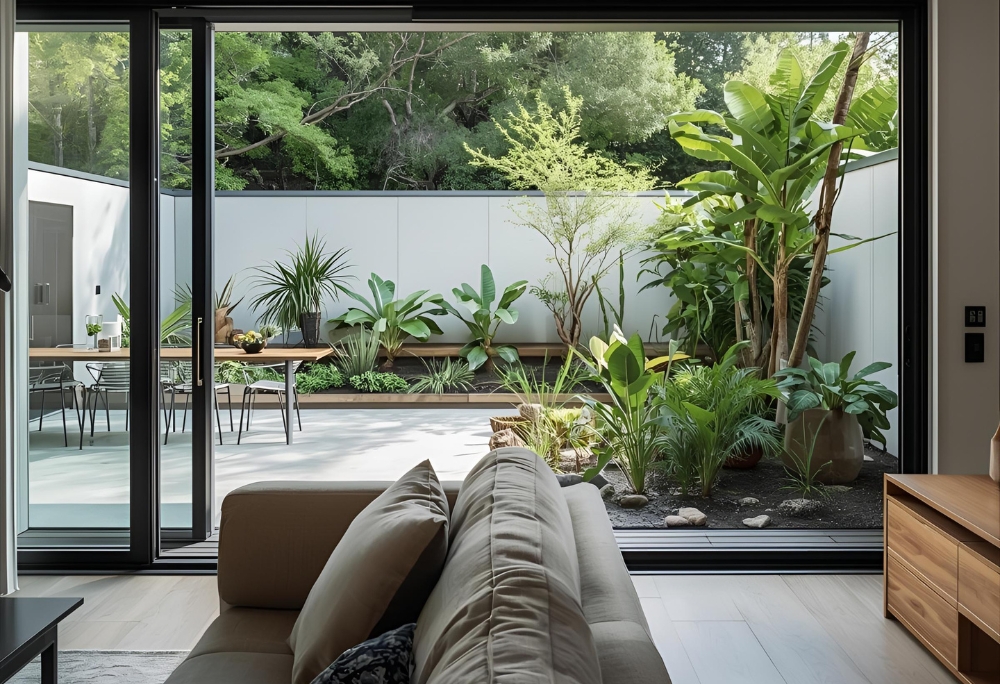How to Bring Nature Into Your Home for Wellness and Stress Relief
Imagine if your home felt like a mini vacation every day — calm, refreshing, and deeply connected to nature. That’s exactly what biophilic design is all about. By weaving natural elements into your interiors, you can reduce stress, improve mental health, and create a truly healthy home design.
As an architect and Feng Shui coach, I’ve seen how nature-inspired interiors transform the way people live. With the right balance of greenery, natural light, and eco-friendly materials, your home can feel like a sanctuary that supports wellbeing.
Let’s dive into some simple steps you can take to bring the outdoors in and create a space that feels like your personal retreat.
1. Greenery: Indoor Plants for Wellness
Plants are the foundation of biophilic interior design. They don’t just look good — they clean the air, boost mood, and help reduce stress.
Start small with hardy indoor plants like snake plants, peace lilies, or pothos. Place a tall leafy plant in your living room, add a few vining plants on shelves, or style your work desk with a small succulent. Even a few plants can make a big difference in your indoor air quality and overall sense of wellbeing.
If you’re ready for a bigger impact, create your own mini jungle. Indoor plants clustered together not only look stunning but also bring strong wellness benefits into your daily routine.

2. Water Features for Stress Reduction
Want to take your space from ordinary to truly calming? Add a water feature. The sound of flowing water has been shown to lower stress and improve focus.
Tabletop fountains, wall-mounted waterfalls, or even small aquariums bring a spa-like feeling to your home. Imagine answering emails with the soft trickle of water in the background — instant relaxation.
Water features are a simple biophilic design element that connects you to nature while supporting your mental health.
3. Natural Light: A Key to Healthy Homes
When it comes to wellness at home, nothing beats natural sunlight. Exposure to daylight improves mood, balances sleep cycles, and even boosts productivity.
Maximize sunlight by pulling back heavy curtains, using sheer drapes, and keeping windows clear of clutter. Add mirrors opposite windows to reflect light deeper into the room. Skylights and sliding glass doors also create seamless connections to the outdoors while filling your home with daylight.
Both your plants and your body will thank you for the extra sunshine.
4. Blending Indoor and Outdoor Spaces
One of the biggest principles of biophilic architecture is creating flow between the indoors and outdoors. Transitional spaces like patios, sunrooms, or cozy window seats help blur the boundary and bring more nature into your daily life.
For smaller homes or city apartments, add potted plants near entryways, use sliding glass doors to open up to a balcony, or style a reading nook beside a window. These design choices create a peaceful, natural escape right at home — minus the bugs.

5. Sustainable, Natural Materials
Materials play a huge role in stress-reducing design. Natural finishes like wood, stone, bamboo, and clay add warmth and authenticity while avoiding the harmful chemicals found in some synthetic products.
Consider wood flooring, stone countertops, linen textiles, or clay décor. These natural materials not only create healthier indoor air but also bring grounding, earthy textures into your home. They’re timeless, eco-friendly, and instantly calming.
Why Biophilic Design Matters
Biophilic design isn’t just a trend. Studies show that nature-inspired design can reduce stress, improve mental wellbeing, and boost creativity. By bringing greenery, water features, natural light, and sustainable materials into your space, you create a healthy home that feels like a sanctuary
For inspiring real-life examples of nature-infused interiors, check out Biophilic Interiors: 21 Projects that Blend Architecture with Nature on ArchDaily.
Your Turn: Have you added biophilic elements to your home? Share your favorite ways to bring nature indoors in the comments.
Want more wellness-focused design tips? Subscribe for weekly insights on creating a healthier, happier, and more nature-inspired home.
